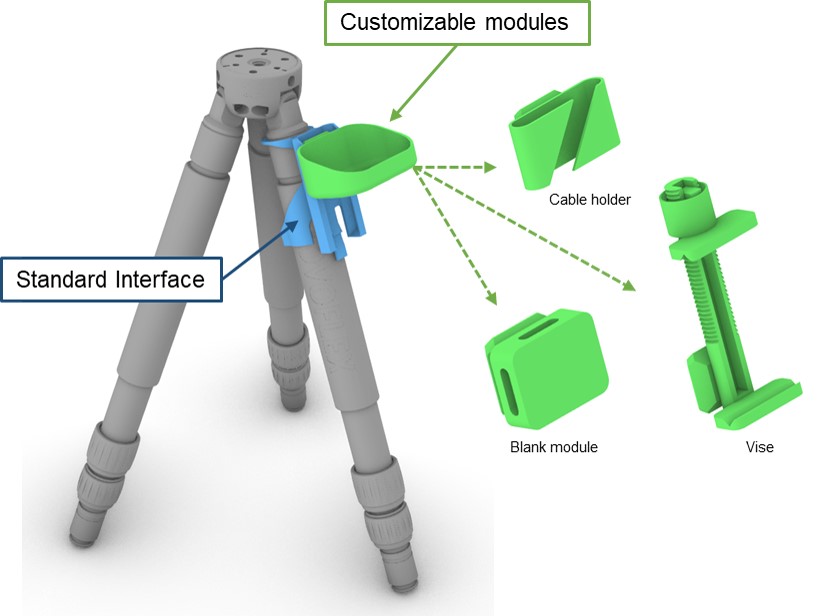Design Configurators for Additive Manufacturing
For many AM applications, the time-consuming design process represents the biggest bottleneck. Design configurators are a promising tool to address this roadblock since they provide intuitive and efficient access to the design for end-users. Within our research, we are exploring the real-world potential and challenges of implementing design configurators for AM.
Case study 1: Customized camera accessories
Two pilot configurators were developed in collaboration with a manufacturer of professional photography accessories. The first configurator offers customers the possibility to create a personalized cover for photography bellows (device for macro photography). This can be individualized with an own inscription and selected as a version with or without a handle. Due to the high demands regarding haptics and surface quality, the Selective Laser Sintering process was selected for manufacturing.
Customers can use the second configurator to customize tripod accessories. There are various predefined attachments, such as a storage tray or smartphone holder. There is also a blank module that advanced users can use to design their own attachments. In contrast to the bellows configurator, the created models can be downloaded as .stl files and produced on an FDM printer. The configurator therefore primarily helps to understand which future products may be in demand and thus to conduct active market research in the sense of open innovation.
Case study 2: Application-specific fluid connectors
In an ongoing project, we are working on developing a configurator for simple additively manufactured (L-PBF) metal fluid connectors. These are required for test setups to connect the machines, which should be tested, to the test bench. Due to the small lot sizes and a rather complex conventional manufacturing process, additive manufacturing is a suitable manufacturing process for these parts. Since each machine requires several custom connectors, the number of resulting connectors with different geometries is large. This leads to repetitive design tasks with a large amount of design effort. To tackle this challenge, the use of an automated design process linked to a design configurator with an easy-to-use user interface was chosen. The configurator shall allow customers to quickly enter information on the interfaces of the inlet and outlet as well as their position and orientation, which is then automatically translated into a manufacturable design.
Potentials and challenges of implementing design configurators for AM
The case studies underline the potential of combining AM and design configurators, since customized components can be designed quickly and automatically by end-users without CAD knowledge and manufactured with AM in small batch sizes. This enables new business and value creation models, while the underlying automation of the design process leads to significant time and cost savings, which often make individualized AM products economical in the first place. The automation also allows for seamless integration into the digital AM process chain. Web-based design configurators achieve a wide outreach due to intuitive access and platform independence, which can also be used to gain new customer segments. The playful interaction leads to an improved user experience with the feeling of having created a product oneself.
However, there are also challenges in the implementation of configurators. For example, depending on the exact application and target group, there may be reduced user acceptance, especially if component geometries have to be uploaded for commercial use. Another challenge lies in the required know-how. In addition to design knowledge for AM, expertise in CAD scripting and web development is typically required. Last but not least, the identification of suitable products, or more precisely product families, is crucial for a successful implementation.
To drive research on design configurators further, we are continuously looking for partners for joint projects and collaborations. If we have inspired your interest in design configurators, please feel free to contact us with your request at any time!

